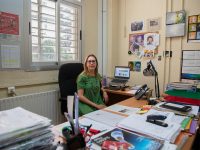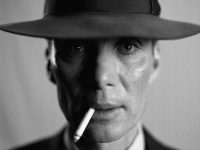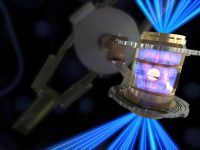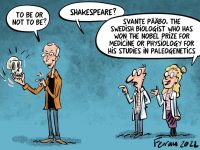The physicist who did not follow the beaten path
Centenary of the birth of Richard Feynman
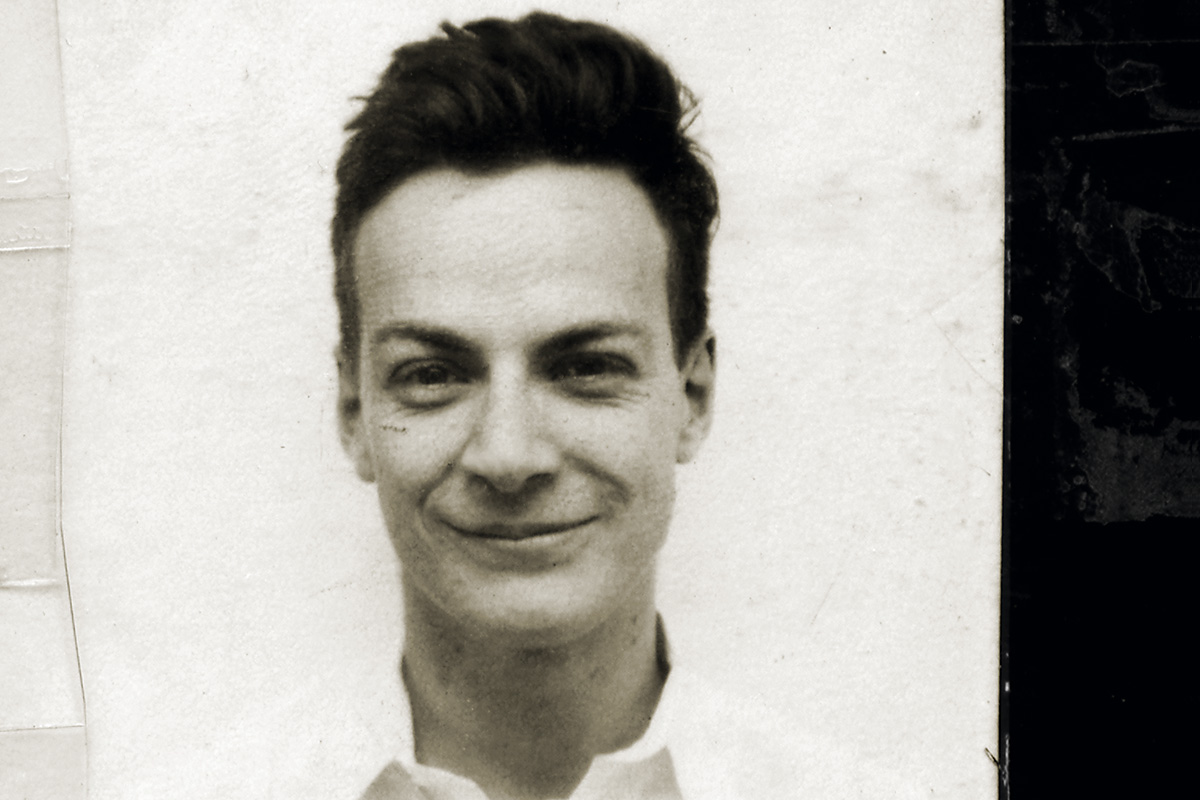
Richard Phillips Feynman (1918–1988) was certainly a curious character, as he himself remarked in the subtitle of his anecdotal books (Feynman, 1985; Feynman, 1988). Not only was he one of the most brilliant and original physicists of the twentieth century, one of the few scientists who opened up new and broad avenues in his discipline. He was also an expert in percussion instruments, an excellent disseminator, a decipherer of Mayan hieroglyphics, a safe-cracker, an occasional biologist, a compulsive iconoclast, and much more. In addition to his natural charm, he had a passionate and very theatrical way of conveying his fascination and delight for natural phenomena. In his biographies (Gleick, 1992; Mehra, 1994; Navarro, 2007; Sykes, 1994) we can find detailed information about his life and work. In this article we will comment on some of the most interesting features of this peculiar figure, whose centenary we are celebrating this year.
«Richard Feynman acquired a reputation as a genius in the early 1940s, when he was recruited for the Manhattan project»
A popular figure
Outside the scientific arena, his popularity exploded just a few weeks after the crash of the Challenger space shuttle, which exploded seventy-five seconds after take-off on 28 January 1986. Feynman was a member of the presidential commission of inquiry into the causes of the accident. As was his wont, he investigated on his own and presented his findings outside the commission. The problem was related to the rubber O-rings closing the fuel tanks. The abnormally low temperature hours before the launch affected the elastic nature of the gaskets. He demonstrated this at a plenary meeting of the commission with a home-made experiment: a glass of ice-cooled water, a sample of the rubber gasket and a clamp. In the United States, the sessions of these commissions are broadcasted live on television, and the entire country learned about the main cause of the accident. More than one person took advantage of Feynman’s sudden popularity to do business, selling T-shirts printed with his image and mysterious hieroglyphs that physicists call «Feynman diagrams».
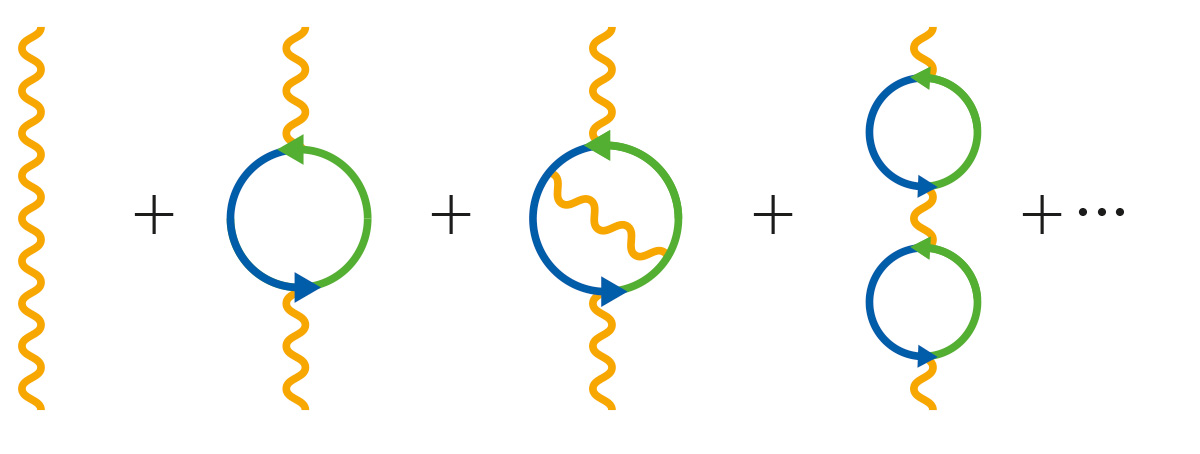
Quantum electrodynamics shows us that the vacuum is not really empty. Electromagnetic radiation photons can constantly create particle and anti-particle pairs, which rapidly annihilate each other to generate photons. The figure shows the first Feynman diagrams that help to understand this phenomenon known as «vacuum polarisation». A photon is represented by a wavy line, an electron by a continuous upwards line and a positron (or anti-electron) by a continuous downwards line. Each line and each junction of two or more lines is translated into a precise mathematical expression, and this allows the necessary calculations to be made simply and with the desired precision / Source: Jesús Navarro
In the field of physics, he had been quite well known for a long time. He acquired a reputation as a genius in the early 1940s when, while still working on his PhD, he was recruited for the Manhattan project at the secret Los Alamos base. As is well known, the aim of the project was to build the first atomic bombs in the United States before Nazi Germany managed to do so. A large number of top scientists were brought together, including Robert Oppenheimer, Enrico Fermi, Eugene Wigner, Hans Bethe, and John von Neumann, to name but a few. They were all soon convinced of the boy’s capabilities: knowledge, intuition, mental agility and, above all, no inhibitions when discussing any subject in physics. In every discussion he tried to understand the problem he was being presented with in depth, asking the relevant questions and highlighting the weak points. Niels Bohr, the project’s external consultant, was well aware that Feynman was the only person in Los Alamos who was not intimidated by his interlocutor’s reputation. On his visits to the base, he always tried to discuss his ideas with Feynman in private, to know his arguments prior to discussing them with the other «big fish» in the project.
Contributions to physics
Feynman received the Nobel Prize in Physics in 1965, shared with Julian Schwinger and Sin-Itiro Tomonaga, for his contributions to the development and application of what is known as «quantum electrodynamics»: the quantum description of the interactions between light and electrical charges, between photons, electrons, and positrons. But Feynman’s method illustrates his approach very well. While his two colleagues were writing long mathematical formulas, he was drawing diagrams of the physical processes he wanted to study. Using these drawings, and following some very precise rules, the calculations are easy to make. In fact, today, Feynman’s diagrams are the standard procedure for studying systems involving the presence of particles and interactions.
«Feynman established the basis for explaining liquid helium’s superfluidity, i.e., its ability to flow without viscosity»
But Feynman also made important contributions in very different fields of physics. We want to highlight four of them. Perhaps the most important is the new formulation of quantum mechanics, based on the so-called «path integral formulation». This was the subject of his PhD, presented in June 1942. The idea is very original and surprising: when a particle travels from one point to another, it passes through all the possible paths between these points simultaneously, however absurd they may seem, with a certain probability for each of the paths. This formulation allows us to deal with situations that are too complicated to be dealt with by the usual wave or matrix descriptions, even though the three are mathematically equivalent.
The second contribution was related to helium, the only substance that remains liquid at absolute zero temperature. Feynman established the rigorous basis for explaining liquid helium’s superfluidity, i.e., its ability to flow without viscosity.
The last two contributions that we would like to highlight here concern fundamental particles and interactions. On the one hand, based on arguments of symmetry, he established the so-called «V-A theory», which provides the general shape of the weak interactions involved, for instance, in nuclear beta decay. On the other hand, he established what is known as «parton theory», which explains how to detect an internal structure of hadron particles (such as protons and neutrons), without making any hypotheses regarding their possible constituents, partons. This theory put the idea of quarks into proper perspective so that it could be verified in experiments.
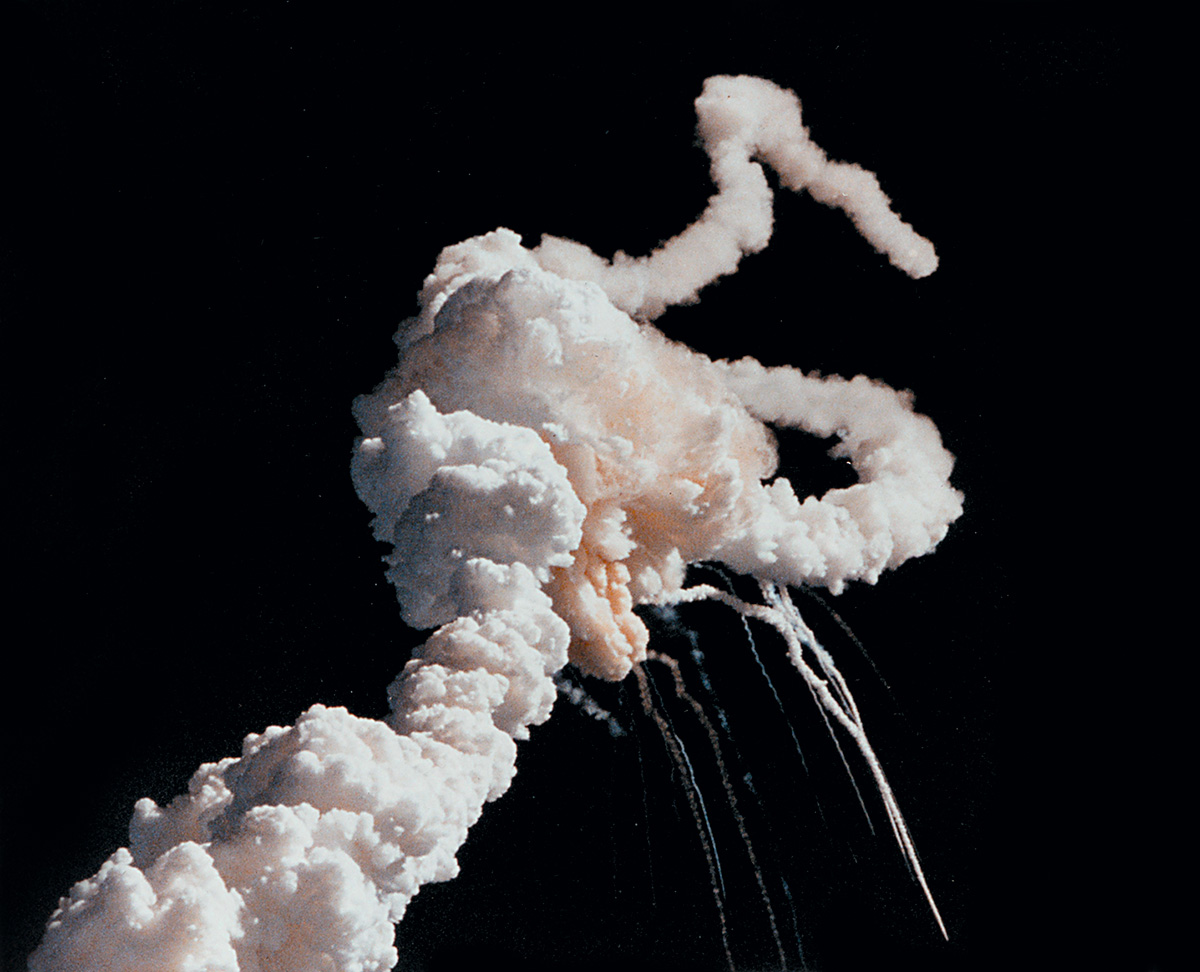
Richard Feynman’s popularity outside the scientific arena exploded within weeks of the Challenger space shuttle accident in January 1986. Feynman explained the causes of the accident during a plenary meeting of the commission of enquiry using a home-made experiment / © NASA
Visionary and pioneer
Feynman played a pioneering role in two fields that have gained importance in recent years. In December 1959, at the annual congress of the American Physical Society, Feynman delivered a lecture entitled There’s plenty of room at the bottom, in which he spoke about the possibility of doing and controlling really small things. How do you write the entire Encyclopaedia Britannica on the head of a pin? This is a purely technological problem because, as Feynman insisted on saying, no physical law forbids the manipulation of atoms one by one. He wondered whether it would be possible to build electrical circuits with just a few atoms. The only difference with the usual circuits would be the need to use quantum mechanics to describe the properties of circuits of atomic size. The same question can be asked about nanoscale devices, such as motors or robots. Feynman would have been very pleased – and also surprised – if he had known about the nanometre-scale devices that we have today, precisely by manipulating atoms one by one. Although there is the myth of Feynman as the father of nanotechnology, the truth is that his 1959 talk was considered a curiosity, had no consequences, and we had to wait until the 1990s for it to be rediscovered, when some nanoscience experts were looking for possible precedents. Like so many visionaries, Feynman had been ahead of his time.
What happened with his incursion into the field of computers, an activity that occupied the last years of his life, was very different. In 1981, at Caltech University, Feynman taught a course on computing theory and electronic computers, and he became an expert on the subject himself. He wondered whether a computer could simulate a physical system, and he showed the need for quantum computers to be able to simulate real quantum processes. He was certainly not the first to raise these issues, but his clarity in finding the solutions made him a pioneer. His papers «Simulating physics with computers», published in 1982, and «Quantum-mechanical computers», from 1986, are a must-read reference for quantum computing.
«Feynman was a member of the presidential commission of inquiry into the causes of the ‘Challenger’ accident»
Dissemination and educational work
Feynman’s originality is evident both in his physics work and in the way he explained it to a non-expert audience. His books and lectures are still fresh, despite the need for updating on some of the topics covered. With his pragmatic style, he moved straight to the heart of the matter, without much preamble. A good example of this is the way he explained quantum physics, in which all the conceptual difficulty can be summarised in the wave-particle duality and the double-slit experiment. Feynman did it with a simplicity and depth that, in my humble opinion, have not been overcome yet (Feynman, 1965).
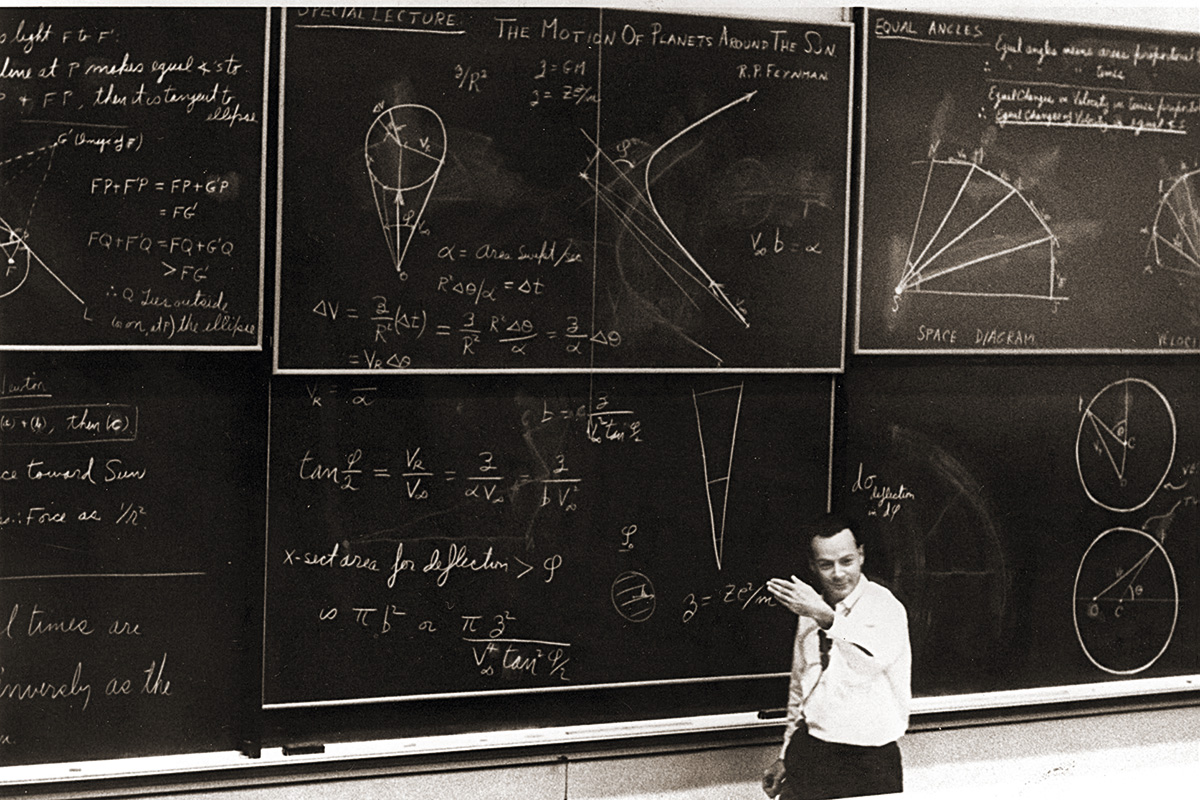
Feynman at the California Institute of Technology in 1963. / © United States Department of Energy
In American universities, famous researchers usually focus only on advanced courses and master’s degrees. Feynman was a notable exception, when he accepted the challenge of teaching a physics course for first and second year students between 1961 and 1963, which would later go into a variety of specialities. The classes, which were recorded and filmed, became one of the most famous courses in this field. They were published in three volumes under the title The Feynman lectures on physics, which are still published and translated today. They are not, however, the best way to get started in physics. Although Feynman made a great effort to find simple and clear explanations for his students, he expected them to have a higher level and greater interest than they had. Those who benefited most were doctoral students, professors and scientists who attended his course – that is, those who already knew physics – because it was a brilliant way of illustrating with examples how to think and reason in physics. Reading this course continues to be a very stimulating experience when reflecting on some basic topic in physics.
Feynman did not actually write any books: he just wrote papers related to his research. His published books include the notes that others took from his courses, or the transcripts of lecture recordings, including the aforementioned physics course. What he wanted was to talk, debate, make a show out of his lessons, courses, or lectures, many of which were filmed and can be found on YouTube. He also liked to tell funny stories, in which he played the leading role. These anecdotes are based on real events, but over time Feynman polished them up to the form he considered best, the one that elicited laughter at the right time. His friend Ralph Leighton recorded and transcribed many of the stories he told during their weekly meetings to play percussion instruments. In short, the published compilations give an idea about his character and vision of the world.
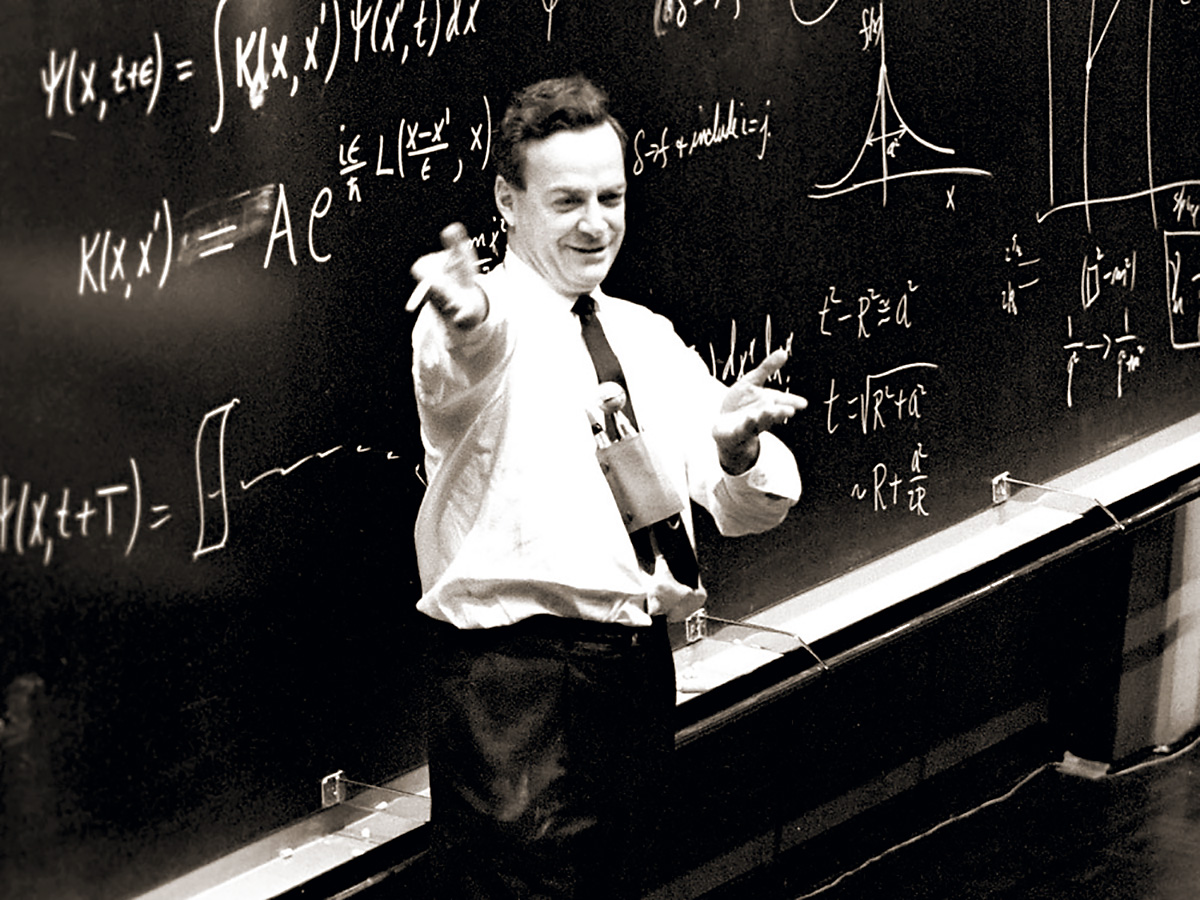
Richard Feynman’s lectures were an attraction for the scientific community. Feynman at CERN in 1965. / © CERN
A one-dimensional mind
In his school and university days, Feynman was only interested in mathematics and physics, leaving aside his interest in girls. He made little effort to study humanities and social sciences. Apart from scientific subjects, his hobbies were playing the bongos, looking for female companions, going to Las Vegas when he was not married, or testing his intellectual possibilities. For many years he did not read any books or newspapers, nor did he listen to the radio. He discovered Mayan hieroglyphics by chance, and found them to be a challenge to his imagination. He became an expert, but did not show much interest in Mayan culture. He maintained this one-dimensional attitude all his life: «I have a limited intelligence and I’ve used it in a particular direction,» he said in his late years.
In the late 1950s he was asked to give talks on topics that were not strictly scientific. Even being aware of his limitations («I believe that a scientist looking at nonscientific problems is just as dumb as the next guy – and when he talks about a nonscientific matter, he will sound as naive as anyone untrained in the matter»), he did not always act accordingly. He liked to say that, in matters relating to nature, scientists are explorers and philosophers are tourists. But he often was a tourist on non-scientific subjects such as religion, pseudoscience, the history of science or the role of science in society. On many occasions, his opinions suffered from an excess of naivety and superficiality. In his favour, we must say he simply gave his opinion and never showed a self-sufficient and pedantic attitude. He was consistent in his rejection of pomposity, and maintained his inherent iconoclasm.
«Feynman’s originality is evident both in his physics work and in the way he explained it to a non-expert audience»
In his late years, his mind opened up to other things. An artist friend interested him in art and taught him how to draw artistically. He told Feynman that scientists cannot appreciate the beauty of a flower, because they reduce it to the atoms that form it. Let us remember that Keats also reproached Newton for having destroyed the poetry of a rainbow by reducing it to the colours of light passing through a prism. Feynman replied to his friend that he too could see the beauty of the flower, just like anyone else, and that his scientific knowledge allowed him to go further and understand the reason for its colours, its interior, its role in nature, its evolution in the universe. «But do I see less or more? […] It does not do harm to the mystery to know a little about it.»
References
Feynman, R. P. (1965). The character of physical law. Cambridge, MA: MIT Press.
Feynman, R. P. (1985). Surely you’re joking, Mr Feynman! Adventures of a curious character. New York: Norton.
Feynman, R. P. (1988). What do you care what other people think? Further adventures of a curious character. New York: Norton.
Gleick, J. (1992). Genius. Richard Feynman and modern physics. London: Abacus.
Mehra, J. (1994). The beat of a different drum. The life and science of Richard Feynman. New York: Norton.
Navarro, J. (2007). Feynman. Los caminos cuánticos. Madrid: Nivola.
Sykes, C. (1994). No ordinary genius. The illustrated Richard Feynman. New York: Norton.


